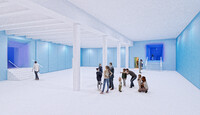
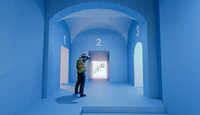
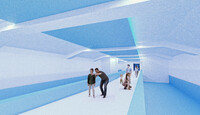
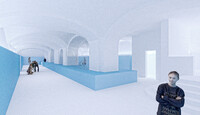
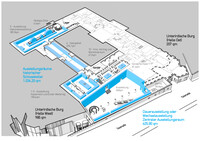
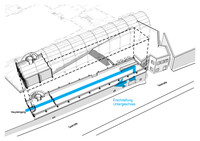
Historical Museum Saar - Concept for optimization of use
The Historical Museum Saar is part of the Saarbrücken castle complex, which was renovated by the prominent architect Gottfried Böhm in the 1980s, and is housed in a new building to the side of the castle, which was built in postmodern style.
Thanks to the Böhm entrance building, the museum has a special signet with recognition value and architectural significance in the competitive landscape of German museums.The concise entrance building, however, only provides a small part of the total area of the museum. It’s kind of the tip of an iceberg. All other rooms in the museum are underground and are distributed over the various parts of the building and rooms in the palace complex. This results in a museum with very different rooms. The uniqueness and quality of the outside image is not continued inside. The interior of the museum does not convey a spatial image that is common to all rooms, neither through its architecture nor through the exhibition. Inside, the museum offers a labyrinthine structure and remains in the visitor’s mind as a coherent structure of additive sub-spaces. The distribution of the museum to the different areas of the palace complex also results in sharp jumps in height within the museum, which visitors have to overcome with connecting stairs that are not always clearly recognizable. The ups and downs in the subterranean area will certainly be felt as arduous for the visitor. The handicapped accessible access via lifts is not always positioned in the immediate vicinity of the main access.